
The Innovation Illusion: How So Little Is Created by So Many Working So Hard
by
Fredrik Erixon
and
Bjorn Weigel
Published 3 Oct 2016
While capitalist ownership is about responsibility, entrepreneurship, and control, asset managers are ultimately actors who cannot practice such ownership. He or she simply cannot be a capitalist. In 2012, after the recovery from the Great Recession, the global asset management industry managed 36.5 percent of assets held by pension funds, insurance companies, sovereign wealth funds, high-net-worth individuals, and the mass affluent. Asset managers are not the only form of intermediaries, but they represent a considerable proportion of the gray ownership in Western economies. And as GDP has expanded in the West, the asset management industry has followed – and, going forward, is likely to grow faster than the rest of the economy, according to PwC.
…
(i), (ii), (iii) Lewis, Michael, Liar’s Poker (i) liberalism classical market liberalism (i) economic liberalism and technology (i) embedded liberalism (i) vs. government intervention (i) neoliberalism (i) License Raj (India) (i), (ii) Lidl (i) Life Magazine, on Milwaukee-Matic (i) life-or-death competition (i), (ii), (iii), (iv) Linaburg Maduell Transparency Index (LMTI) (i) Lindgren, Astrid (i) listed companies and mergers and acquisitions (i) and ownership (i) and predictability (i) Litan, Robert (i) LMTI (Linaburg Maduell Transparency Index) (i) lobbying (i), (ii), (iii), (iv), (v) Locke, John (i) logistics hubs (i), (ii) logistics industry, and lean production (i) London Stock Exchange, and sovereign wealth funds (i) LoopPay (i) Lord Voldemort (Harry Potter books character) (i), (ii) Lyft (i) M&As (mergers and acquisitions) (i), (ii), (iii), (iv) McAfee, Andrew, The Second Machine Age (Brynjolfsson and McAfee) (i), (ii) McCloskey, Deirdre (i) McKinsey (i), (ii) McKinsey Global Institute (i) McLaughlin, Patrick (i) Maddison, Angus (i) Madoff, Bernie (i) Mainelli, Michael (blockchain study) (i) make-or-buy question (i), (ii), (iii) Malkin, Michelle (i) The Man in the Gray Flannel Suit (Sloan Wilson) (i) “man of system” (Adam Smith) (i) managerialism see corporate managerialism Mandel, Michael (i) Mannering, Fred (transportation expert) (i), (ii)n21 Mansfield, Edwin (i) manufacturing (i), (ii), (iii), (iv), (v), (vi) Marconi, Guglielmo (i) market vs. capitalism (i), (ii) complexity (i) concentration (i), (ii), (iii), (iv), (v) dominance by big firms (i) failure and firms (i) liberalization (i), (ii), (iii) and modern portfolio theory (i) uncertainty (i), (ii) see also deregulation; external capital markets; firm boundaries; labor markets; market contestability; public markets; regulation; stock markets market contestability boosting contestability, ways of (i) and deregulation (i) and economic dynamism (i), (ii) and global trade (i) and globalist worldview (i) and globalization (2nd phase) (i), (ii) and innovation (i), (ii), (iii), (iv), (v), (vi) and lean production in car industry (i) and managerialism (i), (ii) vs. market concentration (i) and multinationals (i) and occupational licenses (i), (ii) and oligopolistic (or monopolistic) competition (i) and performance imperatives (i) and performance tools and methods (i) and productivity (i), (ii) and regulation (i), (ii) and services sector (i), (ii) and strategy (i) and telecom network services (i) market socialism (i) marketing (i) Markowitz, Harry (i) Marris, Robin (i) Mars (company) (i) Mars (planet) (i) Marx, Karl (i), (ii), (iii), (iv), (v), (vi) Communist Manifesto (Marx and Engels) (i), (ii) Mason, Paul (i) mass affluent (i) Mauborgne, Renée (i) Blue Ocean Strategy (Kim and Mauborgne) (i) Means, Gardiner (i) mechanistic cognition (i) medical/healthcare sector and regulation (i), (ii), (iii), (iv) and robotics (i) see also corporate medical research; pharmaceutical sector meetings (i), (ii), (iii) MelaFind (i), (ii) Memphis International Airport, Federal Express (FedEx) hub (i) mercantilism (i), (ii), (iii), (iv), (v) Mercedes-Benz cars, French ban on (i) mergers and acquisitions (M&As) (i), (ii), (iii), (iv) MetLife (i) metrics (i), (ii) “Mexican standoff” metaphor (i) Mexico, North American Free Trade Agreement (i) Michaels, Guy (i) Microsoft (i), (ii), (iii), (iv), (v), (vi) Middle Ages, economy and innovation (i) “middle-aged” capitalism (i), (ii), (iii) Mill, John Stuart (i) Millennials (i) Milne, Alistair (blockchain study) (i) Milwaukee-Matic (i) Minsky, Hyman, “money manager capitalism” (i) MIT Media Lab (i) MIT Technology Review, Graylin on e-wallets (i) mobile banking, in Africa (i) mobile phones/technology (i), (ii), (iii), (iv), (v), (vi) see also Nokia mobile subscription market, and globalization (i) modern portfolio theory (i) Modi, Narendra (i) Mokyr, Joel (i), (ii), (iii)n41 “money manager capitalism” (Hyman Minsky) (i) monopolistic (or oligopolistic) competition (i) monopoly, theory of (John Hicks) (i) Monsanto (i) Mont Pelerin Society (i) Moody’s (i) Moore, Wilbert, The Conduct of the Corporation (i) Morieux, Yves (i) Morrison, William (i) Motorola (i), (ii) Mouchot, Augustin (i) moving-target regulations (i) Mr.
…
Chance (Being There character) (i), (ii) multinational (global) companies characteristics of (i), (ii) and competition (i) and corporate cash savings (i) and dispersed ownership (i) and firm boundaries (i), (ii) and foreign direct investment (FDI) (i), (ii) and global trade (i), (ii) vs. home-market firms (i) and innovation (i) as logistics hubs (i) and market concentration (i), (ii) and market contestability (i) and private standards (i) and productivity (i), (ii) and R&D (i) and regionalization of Asia’s trade growth (i) and regulation (i) reputation of (i) and “slicing up” of value chains (i) and specialization (i), (ii) and supply chains (i) and transaction costs (i) see also big firms; globalization; globalization (overview) Musk, Elon (i), (ii), (iii) mutual funds (i), (ii) nanotechnology (i), (ii), (iii) NASA (i) Nasdaq, and sovereign wealth funds (i) national accounts (recorded data), vs. real value of improvements (i), (ii) National Science Foundation (US) (i) neoconservatism (i) neoliberalism (i) nepotism (i) net lending see corporate net lending Netherlands exports to China (i) taxi services and regulation (i) “new economy” (i) New England Journal of Medicine, medical devices study (i) New Machine Age thesis background: economic realities vs. technological blitz vision (i), (ii), (iii), (iv), (v), (vi), (vii); historical perspective (i) criticism of thesis: cyclical effects on productivity argument (i); jobs and technology issue (i); productivity/income decoupling issue (i), (ii); recorded data vs. real improvements argument (i), (ii); summary (i) and fear of artificial intelligence (i) and planning machine economic philosophy (i) and Robert Gordon on US labor productivity growth (i) see also The Second Machine Age (Brynjolfsson and McAfee) New York City dockers and containerization (i) taxi services and regulation (i), (ii) New York Stock Exchange (i), (ii), (iii), (iv), (v) see also Wall Street New York Times, on Bell’s telephone invention (i) NICs (newly industrialized countries) (i) Nietzsche, Friedrich (i), (ii) nimby (not-in-my-backyard) attitude (i) NM Electronics (Intel) (i), (ii), (iii) Nobel Peace Prize, and Twitter (i) “noise” (at work) (i) Nokia and corporate managerialism (i), (ii), (iii), (iv), (v), (vi) and Foxconn (i) and specialization (i) and tablet market (i) non-entrepreneurial planning (i) North American Free Trade Agreement (i) Norway, sovereign wealth fund (i), (ii), (iii) not-in-my-backyard (nimby) attitude (i) Obama, Barack (i), (ii) obsolescence see knowledge obsolescence occupational licenses (i), (ii), (iii), (iv) OECD (Organisation for Economic Co-operation and Development) on aging firms and innovation (i) on corporate savings (i) on “diffusion machine” and productivity (i) GDP forecasts (i) on intermediaries and shareholders’ income (i) on pension funds and PPRFs (i) on R&D skill deficiencies (i) on regulatory administration costs (i) on sovereign wealth funds (i) on taxi services (i) OECD countries product market regulation (PMR) indicators (i), (ii) R&D spending (i) start-ups (i) total assets by types of institutional investors (2001–13) (i), (ii) “off-license” sectors (i) “offshore” pattern of innovation (i) oligopolistic (or monopolistic) competition (i) Ollila, Jorma (i), (ii) Olson, Mancur (i) “one percent” (wealthiest group) (i) online services and diffusion of innovations (i), (ii) and recorded economic data (i) and regulation (i) see also internet open source technology, and socialism (i) organic cognition (i) Organisation for Economic Co-operation and Development see OECD; OECD countries organization industrial organization (i), (ii) vs. managerialism/technostructure (i) and multinationals (i) and specialization (i) Organization Man (i), (ii) organizational diversification (i), (ii) Osborne, Michael (i) outsourcing (i) ownership see capitalist ownership; institutional owners Palo Alto Research Center (PARC, Xerox) (i) “Panama Papers” story (i) Parisian taxis, and regulation (i) patents, and knowledge obsolescence (i) pay see incomes payment cycles (i) payment technologies (i) pensions and asset management industry (i) and gray capitalism (i), (ii), (iii), (iv) need for reform (i) pension crisis (i) pensioners vs. working-age households incomes (i) and principal–agent debate (i) private pensions (i), (ii) public/state pensions (i), (ii), (iii), (iv), (v); public pension funds and reserve funds (OECD, 2001–13) (i), (ii); public pension return funds (PPRFs) (i) see also retirement Pepsi (i) performance imperatives (i) performance measurements (i) performance tools (i), (ii) permission-based regulatory culture (i), (ii) permissionless innovation (i) pessimism, and capitalist decline (i) Pessoa, João Paolo (i) Pfleiderer, Paul (i) pharmaceutical sector and price regulations (i)n28 R&D investment (i), (ii) and regulation (i), (ii) Phelps, Edmund (i)n41 Mass Flourishing (i), (ii) Piketty, Thomas (i), (ii) PillCam digestive tract sensor (i) Pippi Longstocking (i) planning and corporate managerialism: planning machines (i), (ii), (iii); strategy (i); uncertainty and risk (i) Cybersyn project (i) and failing companies (i) and globalization (i) non-entrepreneurial planning (i) and regulation (i) and “scientific civilization” thinking (i) and spirit of bureaucracy (i) and Swedish economy (i) plastic cards (i) Pliny the Elder, Naturalis Historia (i) Plouffe, David (i) PMR (product market regulation) indicators (i), (ii) policy uncertainty, and investment (i), (ii) political romanticism (i) political world and capitalism as borderless space (i) cronyism , (i), (ii), (iii), (iv) dirigisme (France) (i) government intervention vs. liberalism (i) governments and globalization (i) governments and mobile technology (i) gray-haired voters (i) lobbying (i), (ii), (iii), (iv), (v) and regulation: 1980s–1990s policy changes (i); case of taxi services and Uber (i); political romanticism (i); social regulation (i); trend on the rise (i) and sovereign wealth funds (i), (ii), (iii) see also policy uncertainty; politics politics corporate politics (i), (ii), (iii), (iv) end of and digital age (i) populism (i), (ii), (iii), (iv), (v) see also political world populations aging (i), (ii), (iii) decline (i) populism (i), (ii), (iii), (iv) Porter, Michael (i), (ii) portfolio theory (i) Portugal, lesser dependence on larger enterprises (i) positioning (i), (ii), (iii), (iv) poverty, and globalization (i) PPRFs (public pension return funds) (i) see also pensions precautionary regulations (i), (ii), (iii), (iv) predictability (i), (ii), (iii), (iv), (v), (vi), (vii) see also uncertainty; volatility premature scaling (i), (ii) price index bias (i) Pricewaterhouse Coopers (PwC) on asset management industry (i) on compliance officers in US (i) productivity growth survey (i) on sovereign wealth funds (i) principal–agent problem (i) principal–agent theory (i) prioritizing, and strategy (i) private standards (i) probabilistic decision-making (i), (ii) product market regulation (PMR) indicators (i), (ii) production and computer technology (i) geography of production (i) lean production (i), (ii) and multinationals (i) production costs (i), (ii), (iii) unbundling of: first (i); second (i), (ii), (iii), (iv) see also specialization; supply chains; value chains productivity and containerization (of global trade) (i) and cyclical effects (i) and data economy (i) downward trend (i), (ii) and employment (i) and financial sector growth (i) and foreign operations (i)n46 and globalization (i), (ii), (iii) and ICT intensity (i), (ii) and incomes (decoupling thesis) (i), (ii) key to prosperity (i) low productivity and innovation diffusion problems (i) and market contestability (i), (ii) and multinationals (i), (ii) and regulation (i) and robots (i) total factor productivity (TFP) growth (i), (ii), (iii) and transaction costs (i) UK productivity puzzle (i) professional investment/investors (i), (ii), (iii) see also asset managers professions regulation of (i), (ii) see also occupational licenses profit margins and decoupling (productivity/incomes) thesis (i) and globalization (i), (ii) protectionism (i), (ii), (iii), (iv), (v) public markets and financialization of the economy (i) and mergers and acquisitions (i) public pension return funds (PPRFs) (i) see also pensions public relations campaigns (i), (ii) “put option” (i) PwC see Pricewaterhouse Coopers (PwC) quantitative valuation methods (i) quantum dots (QD) technology (i) R&D (research and development) and corporate net lending (i) and firm boundaries (i), (ii) and multinationals (i) and pharmaceutical products (i), (ii) and policy uncertainty (i) and productivity (i) R&D scoreboards (European Commission) (i), (ii) and regulation (i), (ii), (iii) vs. share buybacks at IBM (i) spending issues (i), (ii), (iii) and sunk costs (i) US R&D investment (i), (ii), (iii) and vertical specialization (i) see also incremental development Rajan, Raghuram (i) rating agencies (i), (ii), (iii) rationalism and globalist worldview (i), (ii) and societal change (i) Reagan, Ronald (i), (ii) real economy, vs. financial economy (i), (ii), (iii), (iv) reallocation of business, and deregulation (i) recorded data (national accounts) vs. real value of improvements (i), (ii) regulation after 1980s–1990s deregulation wave (i), (ii) and bureaucracy brake (Germany) (i) and compliance officers (i) and costs and time lags (i) and decline of capitalism (i), (ii) economic regulation (i), (ii) financial regulations (i), (ii), (iii), (iv) and globalization (i) and gray capitalism (i) and healthcare sector (i), (ii), (iii), (iv) index of regulatory freedom (i), (ii) and industrial policy (i), (ii) and innovation (i), (ii), (iii), (iv), (v), (vi) and labor (i), (ii), (iii), (iv), (v) and lobbying (i) and managerialism (i), (ii) and market contestability (i), (ii) moving-target regulations (i) and multinationals (i) and pensions (i) permission-based regulatory culture (i), (ii) and permissionless innovation (i) and planning (i) and political romanticism (i) and political world (i), (ii) prescriptive vs. proscriptive (i), (ii) private standards (i) and R&D (i), (ii), (iii) and size of companies (i) social regulation (i), (ii) and trade (i), (ii), (iii) see also deregulation; legislation; regulatory complexity/uncertainty regulatory accumulation (i) regulatory bodies (i) regulatory complexity/uncertainty cadmium example (i), (ii) energy sector case (i), (ii) impact on economic growth (i) impact on innovation (i), (ii), (iii), (iv), (v) precautionary regulations (i), (ii), (iii), (iv) regulatory conflicts (i) regulatory/policy uncertainty and investment allocation (i), (ii) rise of regulatory uncertainty (i) see also deregulation; regulation renewable energy see green/renewable energy rent-seeking (i), (ii), (iii) rentier capitalism (i), (ii), (iii), (iv), (v), (vi) rentier formula, resource allocation according to (i) rentiers (i), (ii) reputation management (i) research concept of in corporate world (i), (ii) scientific research (i) see also cancer research; incremental development; R&D Research in Motion (RiM) (i), (ii) retail, and globalization (i) retirement age of (i) savings (i), (ii), (iii), (iv), (v), (vi), (vii) see also pensions Ricardo, David, wine-for-cloth thesis (i) rich people vs. capitalists (i), (ii) high-net-worth individuals (i) mass affluent (i) “one percent” (wealthiest group) (i) risk banks’ proneness to (i) and globalist worldview (i), (ii) and uncertainty (i), (ii) Robertson, Dennis (i) Robinson, James (i) robotics/robots and Asimov/science fiction (i) impact of on society (i) and labor (i), (ii), (iii), (iv), (v); Foxconn example (i) and technology-frustrated generation (i) see also artificial intelligence; automation; driverless vehicles; New Machine Age thesis; technology Rodman, Dennis (i) Rolling Stone (magazine), “Why Isn’t Wall Street in Jail?”
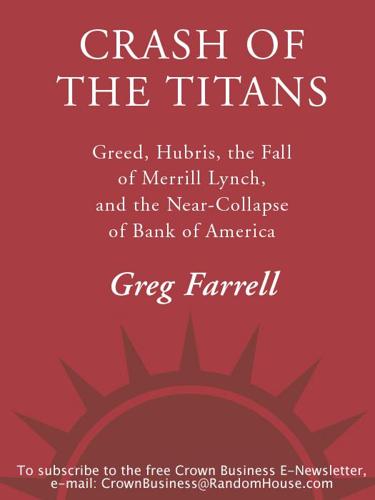
Crash of the Titans: Greed, Hubris, the Fall of Merrill Lynch, and the Near-Collapse of Bank of America
by
Greg Farrell
Published 2 Nov 2010
No one would ever use the word “legendary” in the same sentence as “Lewis,” unless the name “McColl” was squeezed somewhere in between. And now here it was, out of the blue, an opportunity for Lewis to pull off something even the great Hugh McColl couldn’t achieve. In the 1990s McColl saw how the combination of Merrill Lynch’s thundering herd of financial advisors could be grafted on to BofA’s nationwide base of “mass affluent” customers to create a superpower in the industry, a demonstrable advantage for the Charlotte bank against its nearest competitors. The timing wasn’t perfect, since Lewis was about to pay out $21 billion in cash for LaSalle, and had just invested $2 billion in Countrywide Financial, the huge mortgage originator that was hobbled by the real estate downturn.
…
“I don’t see any synergies.” That statement caught Lewis by surprise. There were legitimate reasons to oppose a merger between Merrill Lynch and Bank of America, but lack of synergies was not among them. A deal between the two organizations would graft Merrill’s thundering herd of retail brokers on to BofA’s “mass affluent” customer base across the U.S. The potential for growth in the category seemed unlimited and would allow Merrill’s sales force, already the industry leader, to put even more distance between itself and its competitors. After Curl left the room, Lewis asked O’Neal what he wanted in order to make the deal happen.
…
replied Wetzel with a self-deprecating laugh. “I’m not that guy.” Wetzel turned to the next potential acquirer, Bank of America. “This makes sense on the retail piece,” he said, referring to Merrill’s thundering herd of financial advisors, who could be unleashed on BofA’s extraordinary roster of “mass affluent” customers across the U.S. Another good fit was the international business: Merrill had a strong network of overseas offices, but BofA was almost entirely a U.S.-focused bank. But there were problems with such a marriage, Wetzel said. BofA had started its own investment bank and built up its own trading operation in New York.
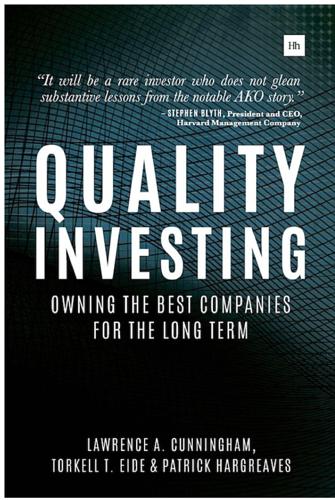
Quality Investing: Owning the Best Companies for the Long Term
by
Torkell T. Eide
,
Lawrence A. Cunningham
and
Patrick Hargreaves
Published 5 Jan 2016
If consumer confidence deteriorated, more than half of respondents (55%) indicated that they were “not at all likely” or “not very likely” to reduce spending on their physical appearance (hair, skin, make-up). The only category in which they were less likely to reduce spending (among 15) was education. In August 2015, we also conducted interviews amongst 711 ‘mass affluent’ consumers in China with a monthly household income of at least RMB 16,000. If consumer confidence deteriorated, our Chinese respondents indicated that they would, on balance, reduce spend on physical appearance. However, once again this category ranked as the second most resilient category, after education.
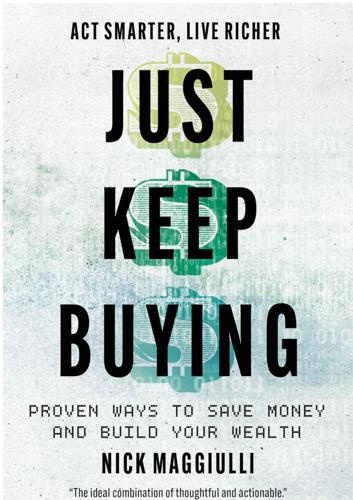
Just Keep Buying: Proven Ways to Save Money and Build Your Wealth
by
Nick Maggiulli
Published 15 May 2022
Why Spending Declines in Retirement When J.P. Morgan Asset Management analyzed the financial behavior of over 600,000 U.S. households, they found that spending was highest among households aged 45–49 and dropped in each successive age group. This was especially true among households in retirement age. For example, among mass affluent households (those with $1 million to $2 million in investable wealth), they found that average annual spending was $83,919 for those aged 65–69 and $71,144 for those aged 75–79—a 15% decline in spending from the younger age group to the older.⁵² They came to a similar conclusion when analyzing data from the Consumer Expenditure Survey.

Retirementology: Rethinking the American Dream in a New Economy
by
Gregory Brandon Salsbury
Published 15 Mar 2010
According to one national study, 50% of Americans say they’re only one month—two paychecks—away from not being able to meet their financial obligations.14 More than half of those people, 28% of the total respondents, couldn’t survive financially for more than two weeks if they were suddenly without their present regular income.15 And before you think this issue concerns only lower socio-economic Americans, think again. Twenty-nine percent of the “mass affluent,” earning more than $100,000 per year, wouldn’t be able to meet financial obligations a month after losing their jobs.16 So how did we get here? What’s behind the carpe diem spending mentality? America’s Spending Boom Before the meltdown, it didn’t matter as much if we were a paycheck away from disaster.
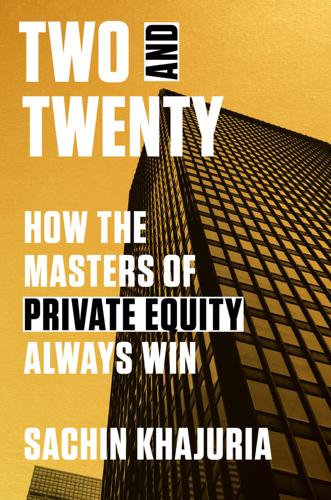
Two and Twenty: How the Masters of Private Equity Always Win
by
Sachin Khajuria
Published 13 Jun 2022
In my view, for the leading firms in particular, there has in recent years been serious and visible progress in big topics such as diversity, sustainability, and disclosure. It’s also likely that as the firms continue to grow, the level of engagement will also grow as part of the flight path to invest, not only for institutions and high-net-worth families but also for the mass affluent market and, if regulators allow, for mom-and-pop retail investors. Private capital is too big to ignore. More engagement would cast a favorable light on private equity and private capital, especially for the top firms. The private equity industry is now mainstream. More firms will manage over a hundred billion dollars each, and a handful will top a trillion dollars.

Twilight of the Elites: America After Meritocracy
by
Chris Hayes
Published 11 Jun 2012
I think the answer lies in a newly radicalized upper middle class. One of the most interesting features of our current political moment is that a significant gulf has opened up between, roughly, the top 40 percent and the top 1 percent, between the middle class, upper middle class, professionals, and the mass affluent and the genuine plutocrats. In fact, the two most energetic and important political movements of the aughts draw their popular constituency from the upper middle class: people with graduate school degrees, homes, second homes, kids in good colleges, and six-figure incomes. This frustrated, discontented class has spent a decade with their noses pressed against the glass, watching the winners grab more and more for themselves, seemingly at the upper middle class’s expense.

The New Class Conflict
by
Joel Kotkin
Published 31 Aug 2014
Walter Russell Mead aptly describes this perspective as a “Downton Abbey vision of the American future.”55 If left unchecked, this trend will change not only our politics but also our consumer culture. In an environment where wealth is concentrated, companies focus on the affluent minority, as opposed to the middle-class mass, which has increasingly limited purchasing power. Demographer Peter Francese points out that the “mass affluent,” which comprises roughly ten percent of households, boosted spending annually last decade at a seven percent rate while overall household growth remained at a mere one percent. Even in the midst of the worst of the recession, it was luxury brands that did best, while those selling to the middle class did poorly.56 In the years between 1992 and 2012, the share of consumption accounted for by the top five percent of earners grew from 27 to 38 percent.57 Ultimately, we are moving to a society where the very few dominate not only spending but also the entire political economy.
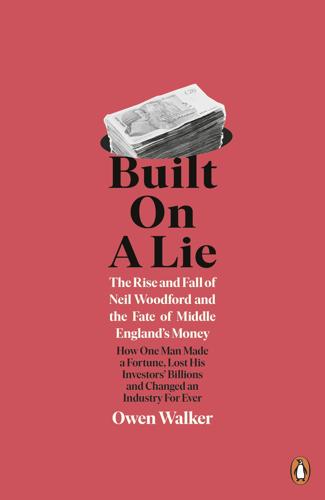
Built on a Lie: The Rise and Fall of Neil Woodford and the Fate of Middle England’s Money
by
Owen Walker
Published 4 Mar 2021
The wealth manager synonymous with Middle England is St James’s Place, a FTSE 100 company whose network of 4,300 advisers looks after £117 billion on behalf of more than 700,000 customers. The group would play a crucial role in helping Woodford set up his own business when he left his long-term employer, Invesco Perpetual, in 2014. SJP, as it is widely known, targets the mass affluent – the 11 million individuals in the UK with between £50,000 and £5 million of investable assets – by hiring function rooms at country houses and luring potential customers with offers of free advice seminars. The thirty-year-old business is astoundingly successful, raking in close to £1 billion of pre-tax profit a year.

Digital Bank: Strategies for Launching or Becoming a Digital Bank
by
Chris Skinner
Published 27 Aug 2013
For example, ABN AMRO organise their customers into five distinct categories: Intensive channel users who use all channels regularly; Personal contact seeking customers, who want advice and face-to-face service; Self-directed people who think they can do everything themselves; Passive hybrid customers who only talk to the bank when they have to; and Inactive channel users who never talk to the bank via any channel The last two categories represent the least profitable and smallest sector for the bank, whilst the first two are the targeted ‘mass affluent’, whilst the mid-category is the majority of the client base. Amazingly, the first three categories all answered the question: I prefer to discuss more serious banking issues in person (89%) and in case of problems, I want to be able to go into a branch and speak to someone (94%). In other words, although the bank knows the branch is dead, the customer does not.
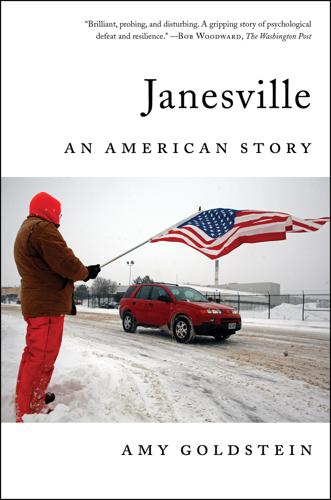
Janesville: An American Story
by
Amy Goldstein
Published 17 Apr 2017
Next month, she will become BMO Harris’s manager in charge of developing teams of “premier bankers” and financial advisors through a swath of Wisconsin that stretches nearly two hundred miles from Green Bay down through Madison and Janesville and into Beloit. Premier banking is offered to BMO Harris customers “in the mass affluent sector,” with savings in the range of $250,000 to $1 million. “At BMO Harris, we believe a higher level of financial achievement demands a higher level of attention,” the bank’s marketing material says. In her work, Mary will be striving to improve service to the well-off. In town, she remains at the apex of the business community, pursuing her considerable volunteer work for nonprofits, attending charity events, continuing Rock County 5.0’s regionally minded efforts to rebuild the local economy.
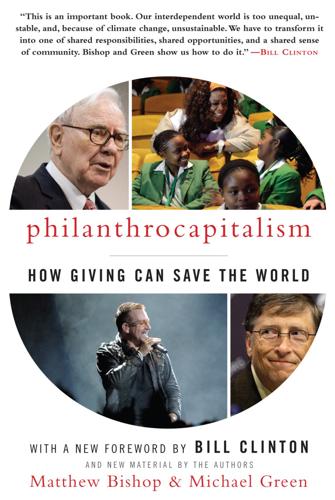
Philanthrocapitalism
by
Matthew Bishop
,
Michael Green
and
Bill Clinton
Published 29 Sep 2008
By giving away the bulk of his own $100 billion fortune, plus the other $100 billion handed to him by his old friend Warren Buffett, Gates has helped to save millions of lives and improved the quality of life for hundreds of millions more. He has also inspired many of the world’s growing army of billionaires (there are now 3,500 of them, according to the 2025 Forbes list) to join him in giving their time and money to tackle some of the biggest problems facing humanity. And not just billionaires: a mass-affluent version of Gates’s brand of “intelligent philanthropy” has become a passion of millions at the wealthier end of the world’s ever more prosperous population. Among the guests today are several of his fellow philanthrocapitalists, each of them, like Gates, now a member of the Elders group launched by Branson and Nelson Mandela all those years ago.
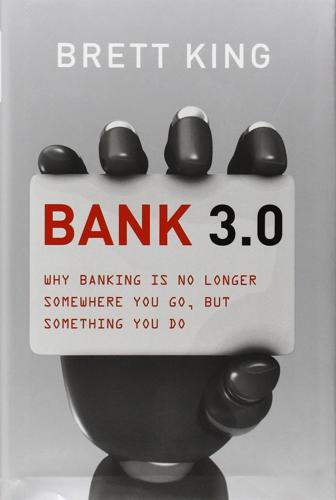
Bank 3.0: Why Banking Is No Longer Somewhere You Go but Something You Do
by
Brett King
Published 26 Dec 2012
For branch banking and design, different strategies need to be adopted for customers who are financially and cognitively less resourceful, and those who are wealthier, but time-poor. If you are catering for those customers who are less profitable but also less inclined to use digital channels, you have a cost burden for carrying legacy behaviour. If you are targeting mass-affluent and high-net-worth customers with $100k+ or more in ready cash to invest, the very nature of their busy lifestyles means that coming to a “space” is a luxury they can rarely afford. For many bankers this might seem counterintuitive. The dilemma then is that the most profitable customers you want to get into a branch are increasingly likely to try a direct channel first because their time is their most valuable commodity, which prevents them from seeking out a rich, face-to-face experience.

Traders, Guns & Money: Knowns and Unknowns in the Dazzling World of Derivatives
by
Satyajit Das
Published 15 Nov 2006
Smarter investors cunningly played them off to get better deals. Dealers began to seek new ways to improve profitability and started to market structured products directly to retail customers, the widows and orphans of legend. Retail customers were now HNWI (high net worth individuals); there was the ‘mass affluent’, surely an oxymoron. Structured product marketers set out into suburbia and strip malls. The logic was compelling – you had less sophisticated clients, the margins would be richer. In short, you could rip them off blind. In Europe individuals, when not dodging tax, were worrying about reduced investment returns.
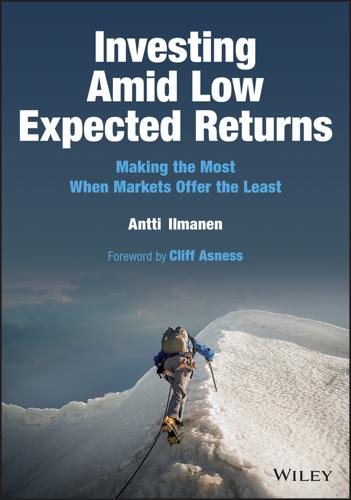
Investing Amid Low Expected Returns: Making the Most When Markets Offer the Least
by
Antti Ilmanen
Published 24 Feb 2022
There are still capital restrictions to both directions, and the Chinese equity market is more influenced by its retail participants than many other markets. I will remind in Chapter 4 that China showcases how economic growth and equity market returns need not go hand in hand. At least, China offers potential for global diversification and active management. 15 Individuals hold $165trn (high net worth individuals $88trn, mass affluent $77trn) and institutions $93trn (pension assets $50trn, insurance companies $34trn, SWFs $9trn). I am not sure how, say, housing and bank lending are treated; recall that broader definitions of housing and debt as wealth might imply even twice as large global wealth. Finally, such studies must beware double-counting, when pension funds pool money from individuals and then delegate their management to, say, mutual funds and hedge funds. 16 A special issue of the Journal of Portfolio Management (2021) reviewed a variety of investment models, including several articles on Endowment and Canada models as well as our retrospective of the Norway Model (https://jpm.pm-research.com/content/47/5).

Connectography: Mapping the Future of Global Civilization
by
Parag Khanna
Published 18 Apr 2016
CITIZENSHIP ARBITRAGE Individuals, much like nations, can multi-align their loyalties in the marketplace of identities. Tycoons hedge against turbulence in their own economies by holding foreign passports even if it is against the law. This global tribe for whom mobility supersedes nationality is growing with the rise of what Credit Suisse calls the “mass affluent” (those with investible assets of up to $500,000). As a result, the citizenship market is booming, with loyalty as much a matter of where one puts one’s money as what passport one carries. It is difficult to think of citizenship as the basis of identity when it is up for sale worldwide, with countries engaged in a tug-of-war to recruit wealthy and talented individuals.